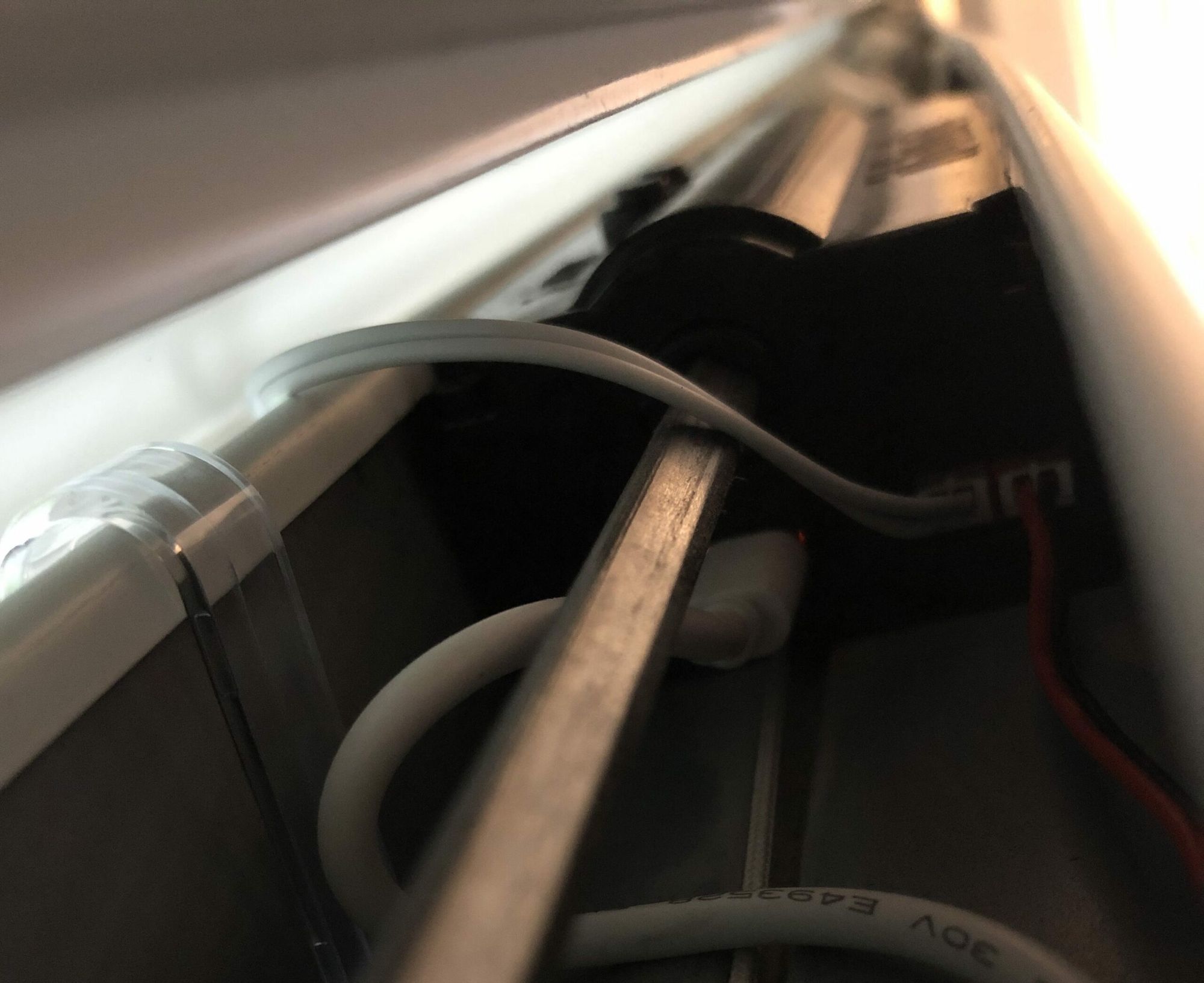UPDATE January 2020
After a few months, all 3 of my iBlinds stopped working. I haven't had time to debug what the cause is yet, but all 3 stopped around the same time so I suspect some sort of controller update knocked them out?
Our house came with custom blinds covering a set of 3 large windows in the living room. We like the blinds and there was no good reason to replace them, but they are behind the couch and, in practice, we rarely opened the blinds due to the inconvenience of accessing them. I realized this would be a great use case for home automation, but I was dismayed to find a lack of zigbee or z-wave retrofit blind control products on the market. Then, I came across the iblinds pre-order. It sounded like everything I had been looking for – z-wave control, modifies existing blinds, no external wires/motors/controllers to mount on the wall!
I always love getting in on a pre-order campaign and this one sounded perfect, so I jumped on it. I’m glad I did – the iblinds, once I got them set up and working, do everything I wanted them to and have been a wonderful improvement to our home. The blinds are open by the time I come downstairs in the morning and close by themselves as the sun sets. The plants in our living room have appreciated the more consistent daily sunshine. When we watch an R-rated movie, I can close all 3 blinds with a single control in an app. On the other hand, there are a few things that make it hard to whole-heartedly recommend iblinds.
Probably most widely applicable – our iblinds are loud! Don’t get me wrong, it’s not like a jackhammer or a blender, it’s not going to drown out the conversation you’re having. It might interrupt you, though. When the iblinds run, there’s no missing it. Everyone in the room notices the sound and, if they aren’t used to the iblinds, they will comment on them immediately when they hear them go off. To be fair, most of the comments we’ve gotten are positive along the lines of “oh, cool, your blinds are automatic, where’d you get them,” but I, personally, would prefer my home automation to be subtle and not draw attention to itself. Our automated curtains, for example, are dramatically quieter and could easily go unnoticed with some background music and conversation.
The other issue with the iblinds is probably specific to our blinds, but they just didn’t fit without some modification. All the existing hardware in this type of blinds sort of press-fits inside the top aluminum rail, which is U-shaped with rolled-over edges to hold everything down. The iblinds lean into this system and (should) just snap into place under the rolled lip. Unfortunately, the iblinds are about 2mm taller than the height of the rest of the hardware in our blinds, so they won’t snap into place. I tried forcing it at first, but the blind rail was noticeably deformed and the pressure on the plastic housing of the iblind actuated the buttons, which prevented it from operating normally. Eventually, I got out my dremmel and cut the rolled lip up a few millimeters in the areas where I wanted to install the iblinds. After cutting my blinds, the iblinds installed quite easily. I was really hoping for a less involved installation, though.
Overall, I’m very happy with the iblinds and I’m so glad that I bought them. Their support team took care of replacing a defective unit I received in less than a day; I have high hopes that the company will iterate on their hardware to be quieter and compatible with more blinds without modification. My alternative to iblinds would have been starting from scratch with my own DIY solution. Even though I had to do a little dremmel work, iblinds still solved 99% of the problem for me, so I can’t complain too much. If I wasn’t comfortable cutting my existing blinds, though, the iblinds would have been a non-starter.
